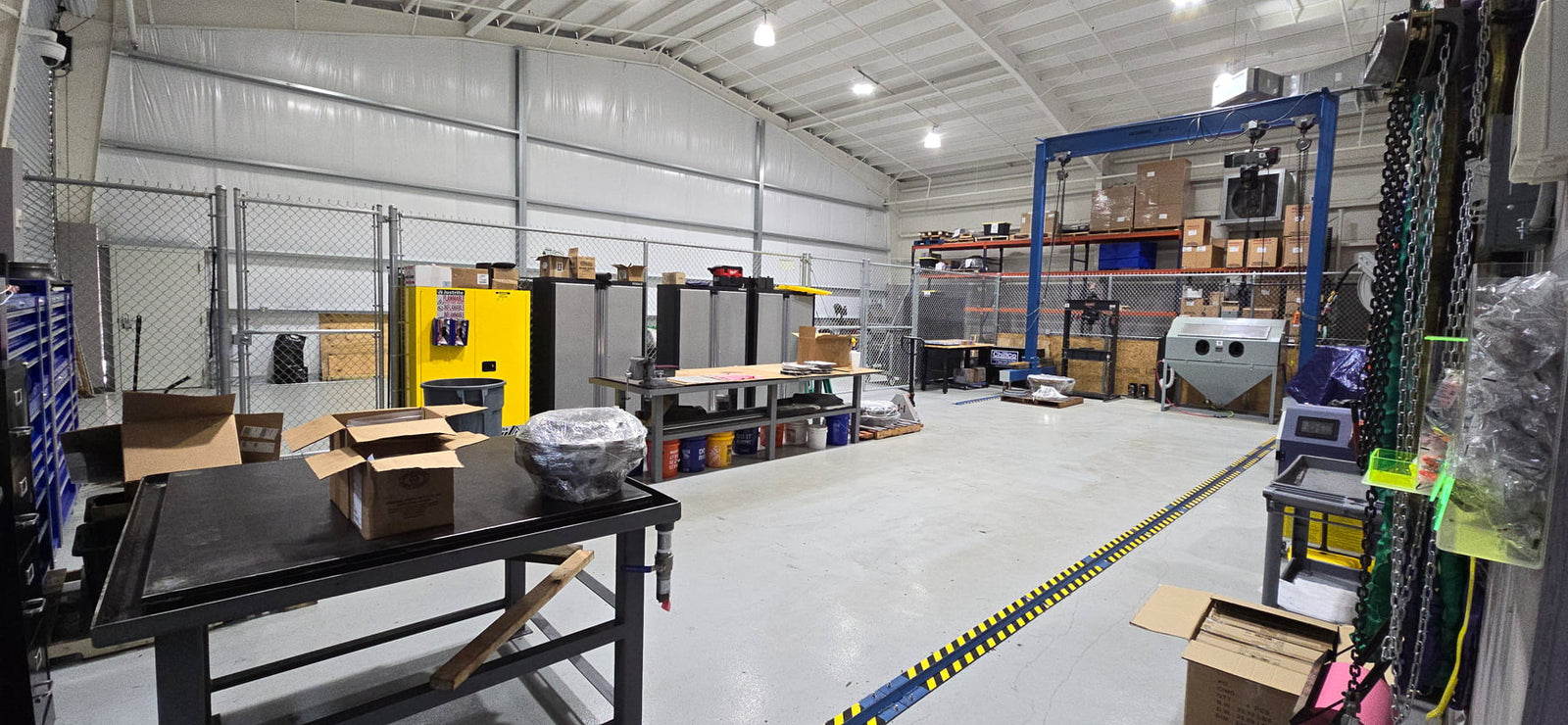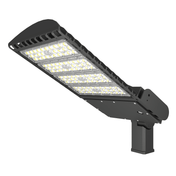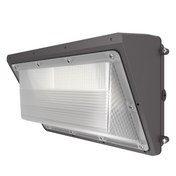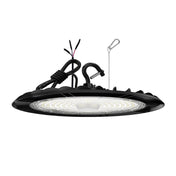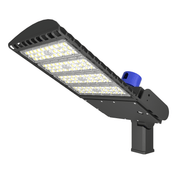Introduction: The Pain Points of Traditional High Bay Lights and the Rise of LEDs
Traditional high bay lights (such as metal halide and high-pressure sodium lamps) have long dominated the lighting landscape of large spaces, such as factory workshops, logistics warehouses, and stadiums. However, over time, their drawbacks have become increasingly apparent: high energy consumption has made monthly electricity bills a significant burden for businesses; their lifespan is short, with lamps or entire lamps requiring replacement every 1-2 years, on average. This not only incurs replacement costs but also increases labor risks associated with high-altitude operations; lighting performance is subpar, with low color rendering making it difficult to identify goods, and rapid light decay resulting in insufficient brightness over time. Just as traditional lighting has reached a bottleneck, LED high bay lights, driven by technological innovation, have emerged as the mainstream choice for lighting upgrades. So, why are LED high bay lights worth investing in? The following analysis will examine several key dimensions.
Dimension 1: Long-term Cost Advantages: Achieving "Cost Reduction and Efficiency Improvement"
Many users, when first choosing LED high bay lights, are concerned about the high initial purchase price, but often overlook the cost savings that can be realized over time. From a lifecycle cost perspective, LED high-bay lights are far more economical than traditional lamps.
1. Energy Cost: Significantly Reduces Electricity Bills
LED light sources offer extremely high luminous efficacy. Currently, mainstream LED high-bay lights offer luminous efficacy of 130-180 lm/W, compared to the mere 60-80 lm/W offered by traditional metal halide lamps. For example, a 1,000-square-meter logistics warehouse would require 50 400W metal halide lamps, drawing a total power of 20,000W. However, using 150W LED high-bay lamps would meet the same lighting needs with only 40 lamps, reducing the total power consumption to 6,000W. Assuming 10 hours of use per day and an industrial electricity price of 1 yuan per kWh, the monthly electricity bill for a metal halide lamp is 20,000W x 10 hours x 30 days ÷ 1,000 yuan x 1 yuan = 6,000 yuan. The monthly electricity bill for an LED high-bay light is only 6,000W x 10 hours x 30 days ÷ 1,000 yuan x 1 yuan = 1,800 yuan, saving 4,200 yuan per month and 50,400 yuan per year, far exceeding the initial purchase price difference.
2. Maintenance Costs: Reduced Replacement and Labor Costs
The theoretical lifespan of an LED high-bay light is 25,000-50,000 hours. Based on 10 hours of use per day, this translates to 6-13 years of use. Traditional metal halide lamps, by contrast, have a lifespan of only 8,000-12,000 hours, or less than 3 years. This means that over the lifespan of an LED high-bay light, traditional fixtures will need to be replaced 2-4 times, incurring not only multiple lamp bulb purchase costs but also labor costs associated with overhead work. For example, if 50 metal halide lamps are replaced each time, the purchase price is 150 yuan per lamp, and the labor cost is 2,000 yuan. The total cost per replacement is 50 x 150 + 2,000 = 9,500 yuan. The total cost of multiple replacements far exceeds the initial investment in LED high-bay lights.
Dimension 2: Excellent Lighting Performance, Improving Space Value
Beyond cost advantages, LED high-bay lights are also considered industry benchmarks in lighting performance, providing a superior lighting experience for large spaces and indirectly improving operational efficiency.
1. High Color Rendering Index and Uniform Illumination Ensure Work Safety and Precision
LED high-bay lights typically have a color rendering index (Ra) above 80, with some high-end products exceeding 90, effectively reproducing the colors of objects. In factory floors, high color rendering helps workers more clearly identify product defects, reducing defective rates. In logistics warehouses, they can accurately distinguish the color and model of cargo labels, improving sorting efficiency. Furthermore, LED high-bay lights utilize a scientific optical design with a well-balanced light distribution curve, providing wide and uniform light coverage without noticeable dark areas or glare, effectively reducing eye fatigue and safety incidents caused by lighting issues.
2. Instant Startup and Controllable Dimming to Meet Diverse Needs
Traditional metal halide lamps require a 5-10 minute warm-up period, preventing instant illumination. However, LED high-bay lights illuminate instantly upon power-up, eliminating the need for waiting and are particularly suitable for applications requiring frequent on/off switching. Furthermore, LED high-bay lights support multiple dimming methods, including 0-10V dimming and DALI dimming, allowing for brightness adjustments based on time of day and operational needs. For example, warehouses can lower the brightness to save energy during nighttime stocking and increase it to full power during daytime operations, achieving "on-demand lighting" and further optimizing energy utilization.
Dimension Three: Combining Environmental Protection with Safety, In line with Sustainable Development Trends
Amid the global advocacy for green environmental protection, the environmentally friendly nature of LED high-bay lights has become a significant advantage, while also offering excellent safety performance.
1. No Hazardous Substances, Reducing Environmental Pollution
Traditional fluorescent lamps and high-pressure sodium lamps contain toxic and hazardous substances such as mercury. Improper disposal can cause serious soil and water pollution. LED high-bay lights, on the other hand, do not contain harmful elements such as mercury and lead. They are environmentally friendly and recyclable, complying with national environmental protection policies. For organizations focused on corporate social responsibility, choosing LED high-bay lights is an important step in implementing environmental protection.
2. Low Heat and High Protection, Suitable for Complex Environments
LEDs are cold light sources that generate far less heat than traditional lamps. This reduces the heat generated by heating the space and reduces the load on cooling equipment such as air conditioners. High-quality LED high-bay lights also offer a high level of protection, with the common IP65 rating providing effective dust and water resistance. They operate reliably even in damp and dusty factory floors or outdoor stadiums. Furthermore, LED high-bay lights offer excellent vibration resistance, making them less susceptible to damage to the lamps due to vibration, making them suitable for industrial environments with operating machinery. Real-World Application Case: LED High-Bay Lights Realize Their Value
A large automotive parts factory originally had 50 400W metal halide lamps, with monthly electricity bills of approximately 5,800 yuan and annual replacement and labor costs of approximately 8,000 yuan. After upgrading to 40 150W LED high-bay lamps in 2023, the monthly electricity bill dropped to 1,700 yuan, saving 49,200 yuan annually. By 2025, the lamps had experienced no damage, and maintenance costs were zero. Furthermore, the workshop's lighting brightness increased by 30%, with improved color rendering. Workers reported increased product inspection efficiency and a 5% decrease in defective product rates.
A warehouse in another logistics park, after implementing LED high-bay lights, further reduced energy consumption by 15% through an intelligent dimming system that automatically dims during the day and turns on on demand at night. Furthermore, the improved illumination uniformity provides forklift drivers with a clearer field of view, and logistics sorting efficiency has increased by 10%, indirectly generating additional economic benefits.
Conclusion: LED high-bay lights are a worthwhile long-term investment.
Overall, while LED high-bay lights have a higher initial purchase cost, their value far exceeds that of traditional lamps in terms of long-term cost, lighting performance, environmental safety, and other factors. They not only help businesses significantly reduce electricity and maintenance costs, but also enhance operational efficiency and safety through improved lighting quality, while also aligning with the trend toward green environmental protection. For industrial and commercial spaces requiring lighting upgrades, LED high-bay lights are more than a simple "lamp replacement"; they are a "value investment" with multiple returns. With the continuous advancement of LED technology, their cost-effectiveness will continue to improve, making them the undisputed choice for lighting large spaces.

